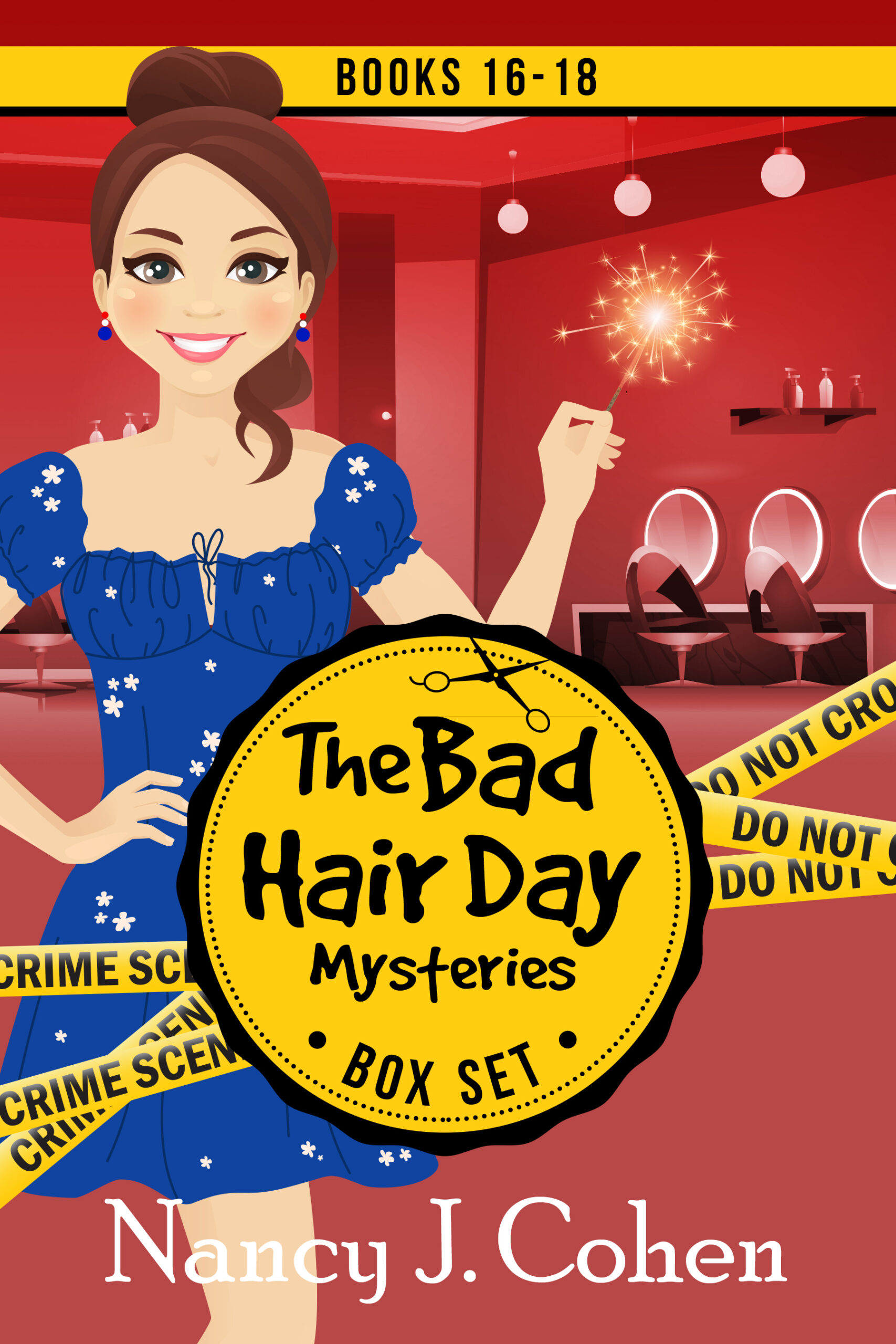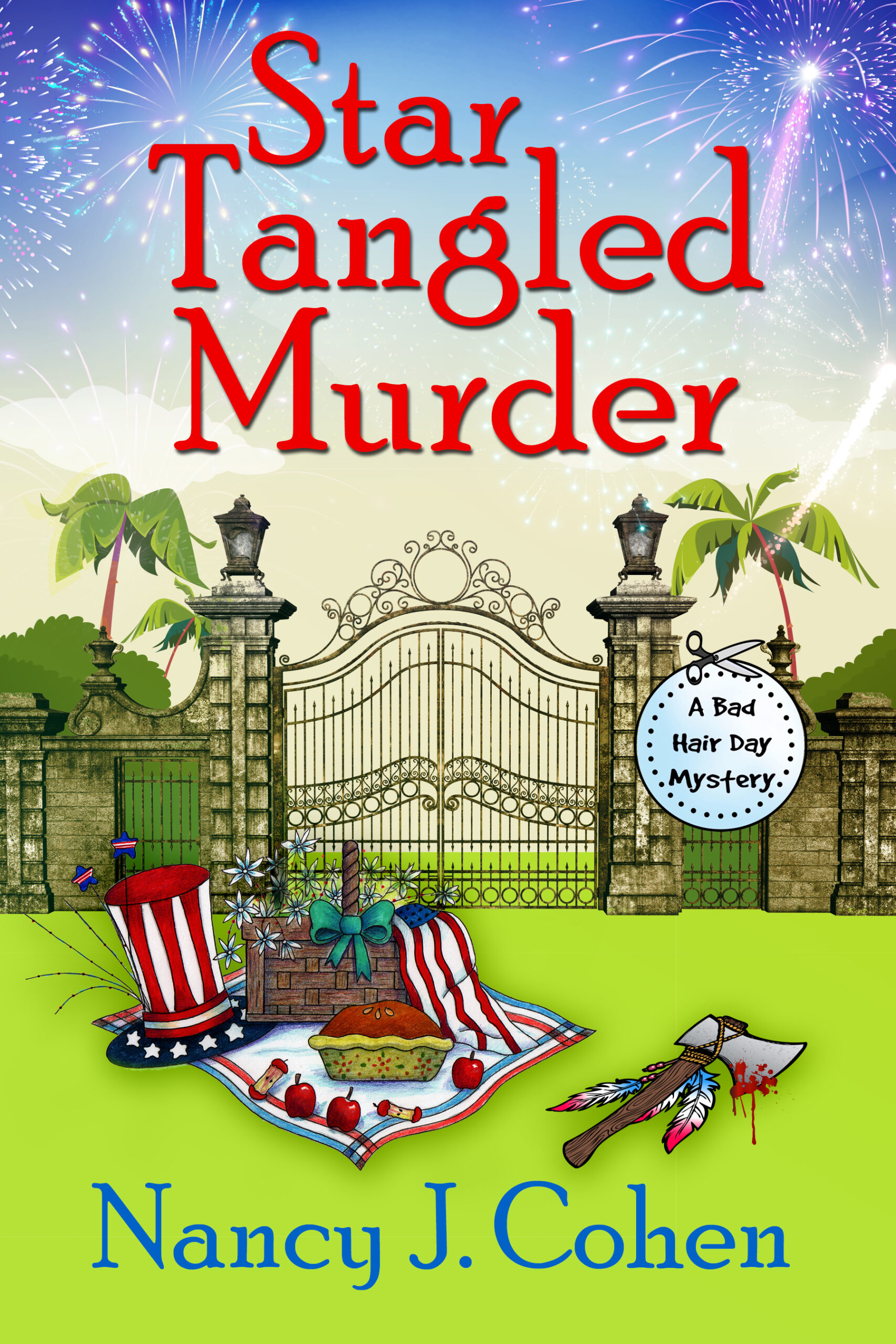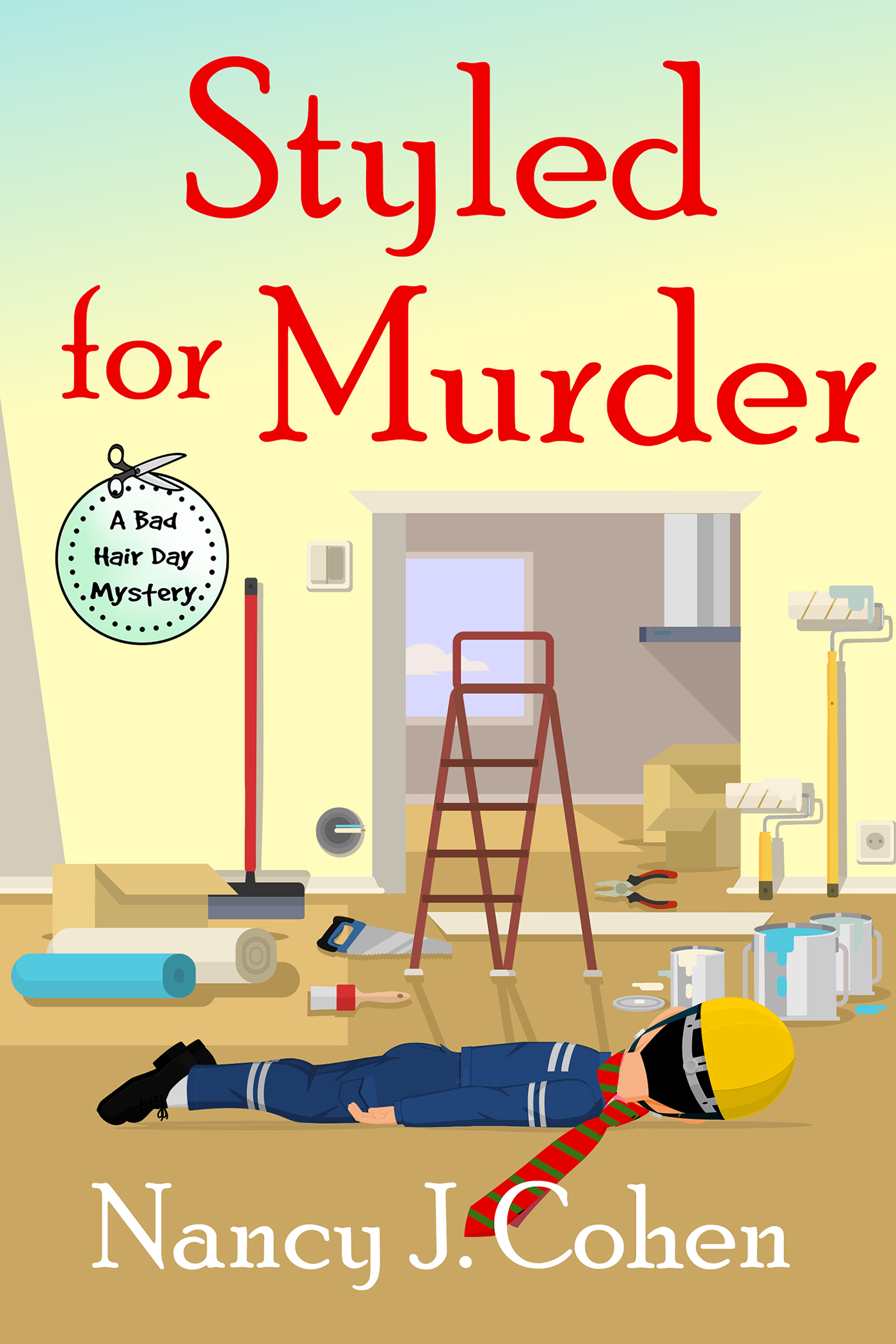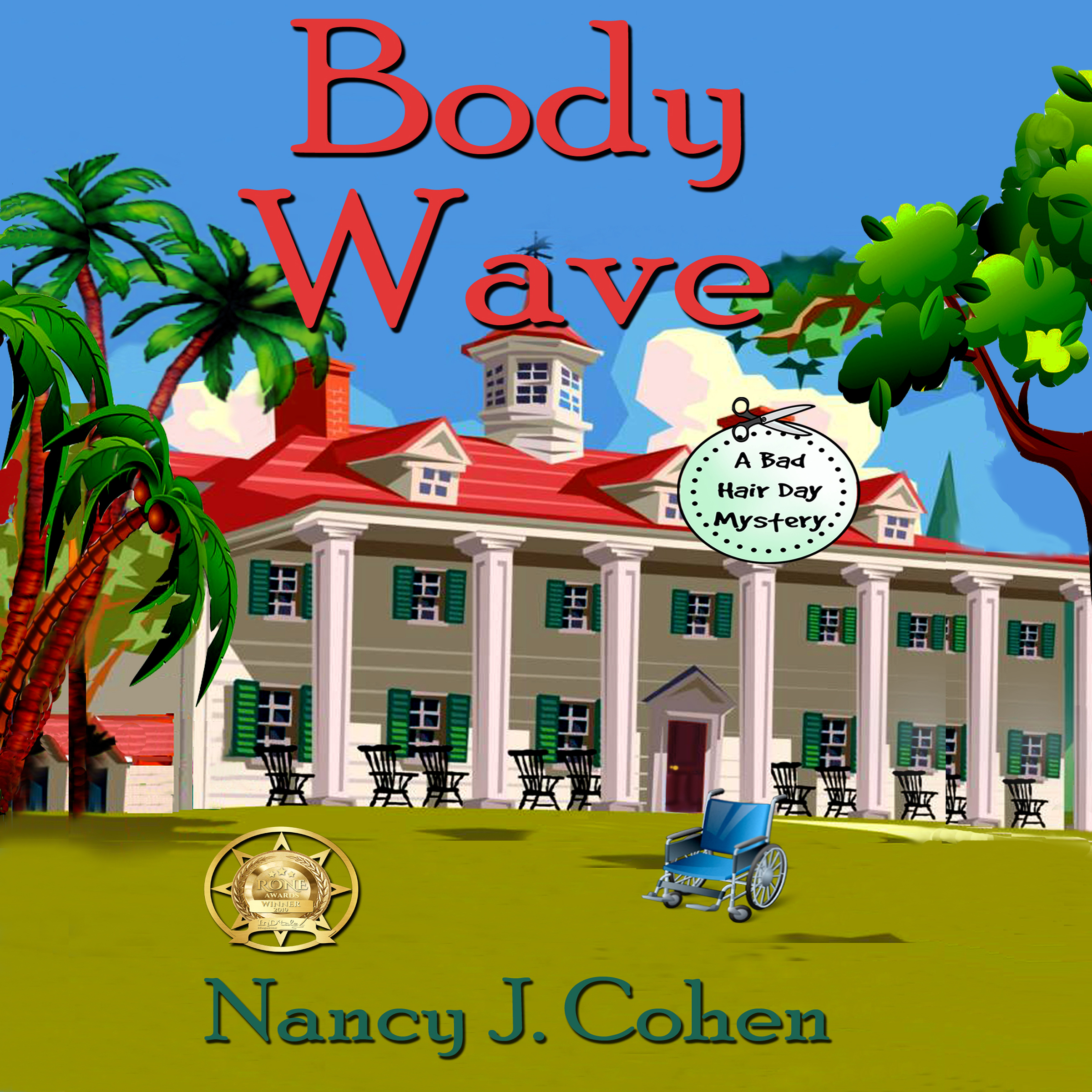When writing a cozy mystery, you need to decide upon crime scene details even though interpersonal relations and not forensic investigations are your story’s focus. Here’s an example of what this means. For my next book, I decided to start the tale at a bake-off contest, but the setting bothered me. Our city fairs are held on athletic fields or a flat stretch of grass in a park. This doesn’t leave much opportunity to stash a dead body.
I was telling this to my manicurist and mentioned that I needed a more interesting setting. She suggested Bedner’s Farm as a possible model for my story. The next day, my husband and I drove north to visit this farmer’s market in Boynton Beach. See my post for a report on this visit. The varied structures and grounds were ideal for my purposes, but I’d move my fictional site nearer to Marla’s hometown. Marla Vail is my hairstylist sleuth and the star of the Bad Hair Day Mysteries.


Now what? Francine Dodger is the target of the festival’s Find Franny scavenger hunt. I got this idea by looking up harvest festivals online. This drove me to research living scavenger hunts until I had an idea of how mine would work. Think about the five W’s when you’re in this phase.
Who ends up dead? Let’s say Francine is the victim.
Where is she killed? How does she arrive there? Is she lured on purpose, or it is a crime of opportunity? Did the killer follow her? Determine Where-dunit.
How does he do it? She could be drowned in a ditch. Water-filled canals line the U-pick rows. But other customers might be milling around there. Will it look like an accident or right away be identified as a homicide? She can fall down a silo. But what would make her climb up there in the first place? Or she could be runover by a tractor.
What knowledge does the killer need? If the murder involves an equipment accident, it’ll have to involve someone who knows to operate the machinery. Ditto the hazards inside a silo. You don’t want to point the finger at a particular suspect like the farmer, because it’s too obvious. Maybe give one of the other characters a secret history of working on a farm or of selling agricultural machinery.
If you poison a victim, who has knowledge about the type of poison used as well as access to it? Is it fast-acting enough for the circumstances, or do you need a slower more insidious death? What are the particular symptoms? Consider your means of murder very carefully when you’re making these decisions so your story will sound plausible.
When does it happen? Think about not only the time of death, but also why not a week or a month ago? Why NOW?
How does the killer get away? Does he have blood on his clothes? Are his shoes wet or muddy? Is he able to blend back into the crowd? How does he act when he encounters the heroine?
Now let’s throw a wrench into the works.
What if it’s a case of mistaken identity? He thought he had killed one woman but he got somebody else who was similarly attired. How will he react upon seeing his intended victim alive and well? This leads to another set of problems. It means he can’t see the victim’s face before he kills her, or he’ll realize it’s the wrong person. So again, we go back to Howdunit?
Once you figure out these details, you’ll have to determine how your amateur sleuth stumbles across the dead body. And this is when the story actually begins.
Writing the Cozy Mystery - Howdunit? Share on XSave
Save
Save
























Nancy,
Great pointers as always, and ones I’ll keep in mind as I set out to start the second book in my Haunted Library mystery.
Marilyn
Love the haunted library concept.
Great advice–as always, Nancy!
Thanks for stopping by!
Thanks, Nancy, helpful as always.
Beginner question here: When you say “this is where the story really begins” do you mean that in the literal sense, that the amateur sleuth stumbles on the body first page or so?
Amy
amyjhueston.com
No, not literally. All that I describe above is the plot or the background info. The story begins when the action moves forward. Often it is with a dead body in the first chapter, or the author might introduce the suspects first and then one of them turns up dead. Since I’m a plotter more than a pantser, I must know my characters and the factors above before I can start writing the story.
If you want to see how this story turns out, sign up for my newsletter and you’ll get a free book sampler including a sneak preview of this book. If you’re already a subscriber, you’ll get this offer in February’s issue. https://nancyjcohen.com/newsletter/
Very interesting article! You should know that the links you give to your articles on Whodunit and Whydunit don’t work. I would be interested to read those too.
I have fixed the links. Thanks for letting me know!